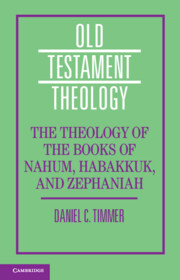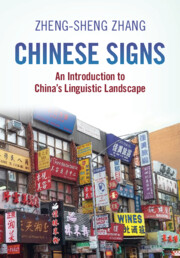793 results
2 - Best Practices for Boards of Directors
- from Part I - What Do We Know about Corporate Governance Practices?
-
- Book:
- Hard Lessons in Corporate Governance
- Published online:
- 23 May 2024
- Print publication:
- 30 May 2024, pp 37-55
-
- Chapter
- Export citation
2 - The History of Sexuality and Anthropology
-
-
- Book:
- The Cambridge World History of Sexualities
- Published online:
- 26 April 2024
- Print publication:
- 16 May 2024, pp 23-44
-
- Chapter
- Export citation
12 - Male Homoerotic Relations in History
-
-
- Book:
- The Cambridge World History of Sexualities
- Published online:
- 26 April 2024
- Print publication:
- 16 May 2024, pp 252-272
-
- Chapter
- Export citation
Principle-Policy and Principle-Personal Gaps in Americans’ Diversity Attitudes
-
- Journal:
- Du Bois Review: Social Science Research on Race , First View
- Published online by Cambridge University Press:
- 15 May 2024, pp. 1-27
-
- Article
- Export citation
Chapter 10 - Cooperative Extension and Diversity
- from Part III - Looking Ahead: Emerging Issues and Trends
-
-
- Book:
- Extension Education and the Social Sciences
- Published online:
- 28 March 2024
- Print publication:
- 04 April 2024, pp 205-223
-
- Chapter
- Export citation
Chapter 1 - Reading Ancient Israelite Prophetic Books
-
- Book:
- The Theology of the Books of Nahum, Habakkuk, and Zephaniah
- Published online:
- 28 March 2024
- Print publication:
- 04 April 2024, pp 1-23
-
- Chapter
- Export citation

The Theology of the Books of Nahum, Habakkuk, and Zephaniah
-
- Published online:
- 28 March 2024
- Print publication:
- 04 April 2024
Carers’ and therapists’ views of internet-delivered guided self-help acceptance and commitment therapy for family carers of people with dementia (iACT4CARERS): a qualitative study in the context of ethnic minority families
-
- Journal:
- The Cognitive Behaviour Therapist / Volume 17 / 2024
- Published online by Cambridge University Press:
- 26 March 2024, e11
-
- Article
-
- You have access
- Open access
- HTML
- Export citation
Réduire le fossé culturel entre les forces armées et la société civile sans rompre avec le « compromis huntingtonien »
-
- Journal:
- Canadian Journal of Political Science/Revue canadienne de science politique , First View
- Published online by Cambridge University Press:
- 21 March 2024, pp. 1-17
-
- Article
- Export citation
Chapter 5 - Subsidised Theatre
- from Part II - Theatre Sectors
-
-
- Book:
- The Cambridge Companion to British Theatre since 1945
- Published online:
- 14 March 2024
- Print publication:
- 21 March 2024, pp 102-122
-
- Chapter
- Export citation
26 - Conclusion
- from Part IV - Emerging Trends
-
-
- Book:
- Deciphering the Genome of Constitutionalism
- Published online:
- 14 March 2024
- Print publication:
- 21 March 2024, pp 345-356
-
- Chapter
- Export citation
A Snapshot of Academic Job Placements in Linguistics in the US and Canada
-
- Journal:
- Canadian Journal of Linguistics/Revue canadienne de linguistique / Volume 69 / Issue 1 / March 2024
- Published online by Cambridge University Press:
- 15 March 2024, pp. 129-143
-
- Article
-
- You have access
- Open access
- HTML
- Export citation
Advancing the Science of Mentorship: Future Directions for Sustainable Implementation and Evaluation of Mentorship Education for the Clinical and Translational Science Workforce
-
- Journal:
- Journal of Clinical and Translational Science / Volume 8 / Issue 1 / 2024
- Published online by Cambridge University Press:
- 13 March 2024, e54
-
- Article
-
- You have access
- Open access
- HTML
- Export citation
Programme d’été sur le vieillissement de l’Institut du vieillissement des Instituts de Recherche en Santé du Canada : trois pistes de réflexion de participants du Québec
-
- Journal:
- Canadian Journal on Aging / La Revue canadienne du vieillissement , First View
- Published online by Cambridge University Press:
- 13 March 2024, pp. 1-3
-
- Article
-
- You have access
- Open access
- HTML
- Export citation
5 - Body image and young children
- from Part 2 - Dimensions of health and wellbeing
-
-
- Book:
- Health and Wellbeing in Childhood
- Published online:
- 08 March 2024
- Print publication:
- 04 March 2024, pp 72-89
-
- Chapter
- Export citation

Chinese Signs
- An Introduction to China's Linguistic Landscape
-
- Published online:
- 29 February 2024
- Print publication:
- 07 March 2024
Phenotypic profiling of lentil (Lens culinaris Medikus) accessions enabled identification of promising lines for use in breeding for high yield, early flowering and desirable traits
-
- Journal:
- Plant Genetic Resources / Volume 22 / Issue 2 / April 2024
- Published online by Cambridge University Press:
- 14 February 2024, pp. 69-77
-
- Article
-
- You have access
- Open access
- HTML
- Export citation
Chapter 13 - Taking Your Time:
- from Part III - Interpreting
-
-
- Book:
- The Cambridge Guide to Mixed Methods Research for Theatre and Performance Studies
- Published online:
- 01 February 2024
- Print publication:
- 08 February 2024, pp 255-271
-
- Chapter
- Export citation
1 - Introduction
-
-
- Book:
- Diversity and Precarious Work During Socio-Economic Upheaval
- Published online:
- 01 February 2024
- Print publication:
- 08 February 2024, pp 1-11
-
- Chapter
- Export citation
3 - LGBTQ+ Individuals and Precarious Work
-
-
- Book:
- Diversity and Precarious Work During Socio-Economic Upheaval
- Published online:
- 01 February 2024
- Print publication:
- 08 February 2024, pp 36-57
-
- Chapter
- Export citation



